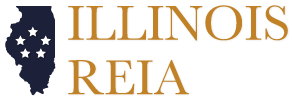16 May Bottled Water vs Tap Water
Here is an article that I as a frugal landlord find that it supports my position on bottled water. In my opinion you would be money ahead to install a home water filter for drinking water and reap the benefits at a fraction of the cost. In fact at an average cost of $1.22 per gallon, consumers are spending 300 times the cost of tap water to drink bottled water. This blog takes no credit or responsibility for any of the claims made in the following article by Paul J. Baicich. We just agree with him.
http://clark.com/deals-money-saving-advice/pepsi-aquafina-tap-water-best-bottled-waters/
A Critical – and Practical – Look at Bottled Water Consumption
Editor’s note: This piece appeared in our latest edition of The Birding Wire. It was written by friend and associate Paul J. Baicich. He discusses why it’s important to take a fresh – and critical – look at the phenomenon of bottled water consumption in the U.S. His article originally appeared in the May 2017 edition of Great Birding Projects (http://www.greatbirdingprojectscom)
In 1991, the U.S. crossed a dietary, market, and cultural barrier: salsa bested ketchup for the first time, with ketchup outsold by $40 million in retail stores. At the time and in the words of David Weiss, head of Packaged Facts Inc., “the taste for salsa is as mainstream as apple pie.” This was a cultural curiosity, something reflecting our corresponding changes in demographics, taste, and diet.
Last year, a quarter century later, another barrier was broken: bottled-water consumption in the U.S. reached 39.3 gallons per capita, while carbonated soft drinks fell to 38.5 gallons. This marked the first time that soda was knocked off the top position, according to the Beverage Marketing Corporation.
While the salsa/ketchup shift had a curious and even positive feel to it, the bottled-water/soda change leaves many folks scratching their heads. It is a shift in consumption that decades ago would have seemed unthinkable: consumers buying a packaged version of something they could get virtually for free from the tap.
Of course, there are rival motivations pulling consumers. On the one hand, there are consumer concerns about the effects of artificial sugar and sweeteners. On the other hand, public dismay over possible water contamination has helped boost growing demand for bottled water.
But let’s look at what much of the public does not know, at least about bottled water.
When the public buys bottled water, it is often drinking the very same water that comes out of the tap. For the most part, bottled water is no safer or cleaner than tap water. About 45% of bottled water brands are sourced from the municipal water supply, the same source as what you may get at your kitchen sink.
When the public buys bottled water, many of the very same soda companies benefit. More than a quarter of bottled water revenue last year was shared by the soda giants Coca-Cola Co. and PepsiCo, sellingDasani and Aquafina respectively. (Both companies claim that their water is filtered for purity using a “state-of-the-art” process.)
And, if you thought it was just a replay of the Coke vs. Pepsi battle, think again. Nestlé, the largest food company in the world, owns a suite of bottled-water brands with down-home names (e.g., Arrowhead, Deer Park, and Poland Spring). And if you are into higher-end water, try some of the European-basedNestlé options (e.g., the Italian San Pellegrino and the French Perrier). As of two years ago, multinationals like PepsiCo, the Coca-Cola Company, and Nestlé were raking in a combined $110 billion a year selling bottled water worldwide.
Are there other good choices? Perhaps.
If you are truly hankering a taste of sweet or a jolt of caffeine with your cool drink, you can try that soft drink that matches your own taste. If you want water, however, simply bottle you own! As we wrote four years ago, the purchase of a reusable and refillable water bottle for as little as $1.99 – versus $1.25 for vending-machine water is simply a smart deal. Those stainless-steel and durable plastic reusable water bottles are everywhere. Besides, under circumstances when only about 2 of every 10 commercial plastic water bottles are recycled, the use of tough reusable bottles makes even more sense. Today, billions of plastic bottles still wind up in landfills and hundreds of millions end up littering streets, streams, beaches, bays, and the ocean.
Alas, in the U.S. alone, more than half the population drinks bottled water. Paying a premium price for water in bottles is something that is now viewed as “normal” in America. The sale of bottled water here now accounts for about 30% of all liquid refreshment sales, far exceeding the sales of milk and, yes, even beer. Still, the trend can be reversed… if we try.
Unless you live in Flint, unless you are at a place where water is contaminated, go for bottling your own. (And if your local water is at risk, demand clean water as a right!)
When you go afield – birding, hiking, canoeing, hunting, fishing, whatever – simply pack your own water. When you are at a conference – or, better yet, when you are planning a conference, meeting, or festival – make accommodations for refilling reusable bottles.
When you get down to basics, it’s really pretty simple.
By
Paul J. Baicich



No Comments